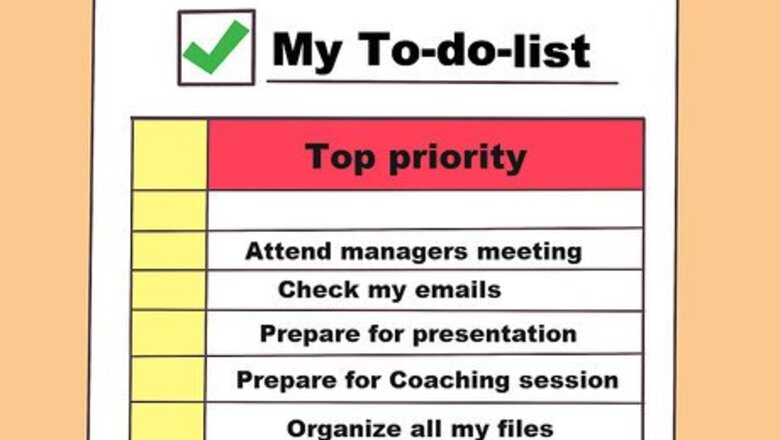
views
Organizing Your Thinking
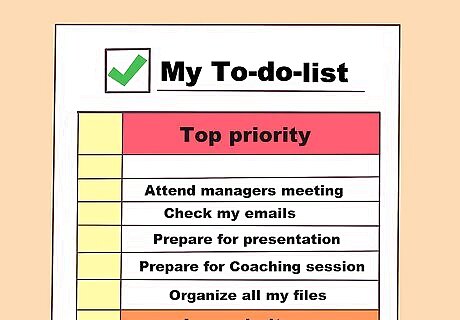
Create a to-do list. Write down everything you have to do today, and cross off each thing as you complete them. By writing down daily tasks, you do not have to stress about remembering to do them. Crossing things off your list will likely make you feel productive. Put things on your list you have already done just to cross them off. Order your to-do list by high priority to low priority. Assess the urgency and importance of each to help you prioritize. Think to yourself, “if I could only do one thing today, what would it be?”. That is your number one thing on the to do list. If possible, make a to-do list for the next day and refer to it before you go to sleep. By doing so, you will wake up with an action plan in mind.
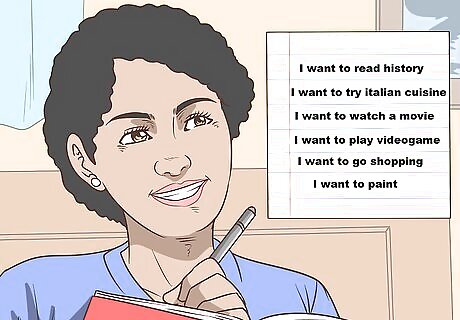
Create a running list that you add to constantly. If there is a book you want to read or a restaurant you want to try, make a running list that you have on you at all times. If you want to see a movie, you don’t necessarily need to see it today, and therefore don’t want it on your daily to-do list. Having a running list will help remind you of your “extra” to-dos. You can make a running list in a notebook you always carry or online using programs like Dropbox so it is accessible at all times.
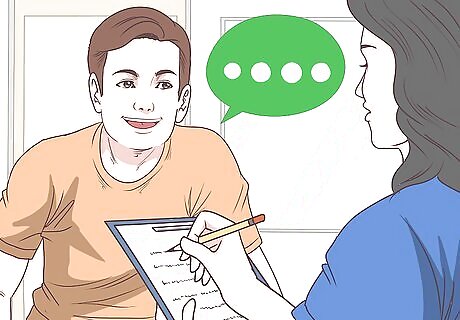
Take notes when you are talking to people. Take notes on the conversations you have with people. This is especially important in business conversations, but also important during interactions with friends and family. Taking notes will remind you of an important thing someone said, a task to complete that you had not anticipated, or just serve as a friendly reminder of fun times with your loved ones. You do not have to keep a notebook on you at all times and meticulously write down each word someone says. Just try to set aside a time to jot down one or two important things from each conversation that you have.

Use a planner. An annual planner can be immensely helpful in getting your thoughts together. Use it to write down appointments, travel, and other important things. Refer to it daily and write down things that will happen in the long term. For example, if you schedule a conference call for 6 months from now, write it in your planner now so you won’t forget.

De-clutter your brain. Just as you get rid of unused or unimportant things in your office and at home, you must also remove unnecessary thoughts from your brain. Try meditating to remove negative thoughts like worry and stress from your mind.
Organizing at Home
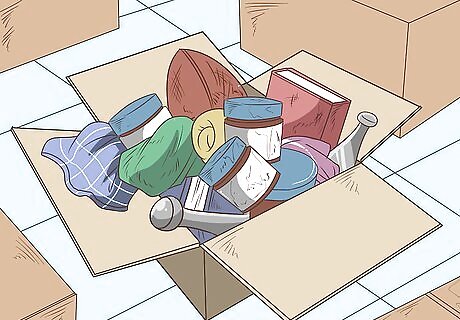
Throw away unnecessary items. De-cluttering is essential first step in organizing your home. Dump out drawers and remove unnecessary items, throw away expired food, throw out or donate clothes and shoes you haven’t worn in over a year, properly dispose of expired medications, throw out or consolidate empty or half-empty toiletries, and any other items you don’t absolutely need. EXPERT TIP Kathi Burns, CPO® Kathi Burns, CPO® Board Certified Professional Organizer Kathi Burns is a board certified Professional Organizer (CPO) and Founder of Organized and Energized!, her consulting business with a mission to empower people to master their environment and personal image by assisting them in taking control, making change and organizing their lives. Kathi has over 17 years of organizing experience and her work has been featured on Better Homes and Gardens, NBC News, Good Morning America, and Entrepreneur. She has a BS in Communication from Ohio University. Kathi Burns, CPO® Kathi Burns, CPO® Board Certified Professional Organizer Put a donation bin in a hallway closet and another one in your clothes closet. Every time you find an item you don't want anymore, put it in the donation bin. If you put on an article of clothing that no longer fits correctly, put it in your donation bin. Donation bins give you an exit strategy for all your excess.
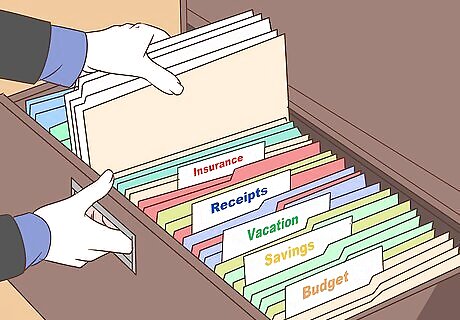
Create binders for important items in your life. Create labeled binders for “Auto Insurance”, “Vacation”, “Receipts”, “Budget”, and any other important item or even in your life. Try color coding your binders. Blue for Receipts (gas, grocery, clothes), Red for Insurance (auto, home, life), etc. Keep the binders on an organized shelf.

Put hooks and shelves on the walls. Use the often underutilized vertical space in your home. Purchase hooks to hang up bikes in your garage and stand alone (floating) shelves to make efficient and decorative organization spaces.
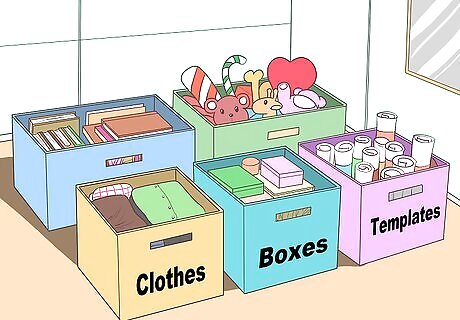
Invest in storage bins. Like organizing your office, purchase bins and baskets to put all of your things into. Put similar objects into the same bin and have a system to store your bins. Buy bins and baskets of all sizes to organize everything in your home including utensils, make-up, stuffed animals, food, shoes, and trinkets.
Improving Your Organization at the Workplace
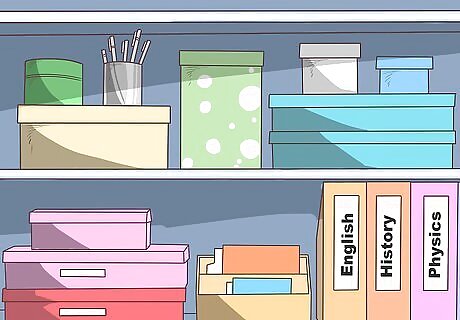
Purchase organization bins. Visit a store that sells organizing bins (The Container Store, Walmart, Target, The Home Depot, Lowes, IKEA, dollar stores, Bed Bath & Beyond, etc.) and pick up at least ten. Buy bins of all different sizes to fit pens, papers, and larger items. Buy bins, baskets, file drawers, and any other object that can contain your things.
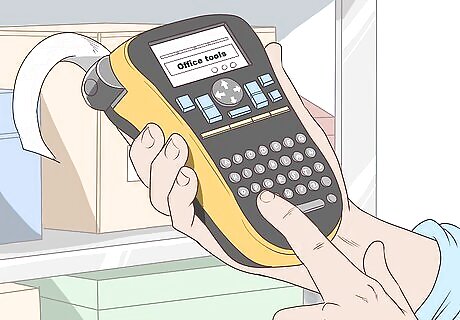
Purchase a labelling machine. What is the point of having all of your things in nice storage bins if you do not know what is in each bin? Use a labelling machine to label each bin appropriately. For example, have one bin labeled “Writing Supplies” where you keep pens, pencils, and highlighters, and another bin labeled “Tools” that has scissors, staplers, staple removers, and hole punchers. Label absolutely everything including your files, drawers, and cabinets.
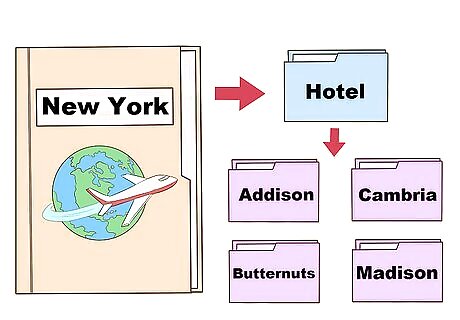
File your information by “how you will use it”. Instead of putting an item in a file based on where you got it, file it based on how you will use it in the future. For example, if you have documentation for the hotel you will be staying at in New York on your business trip, file that in your “New York” file, instead of your “Hotel” file. Create sub files. Have a “Hotel” file, but then have multiple “city” files for the places you travel to often.
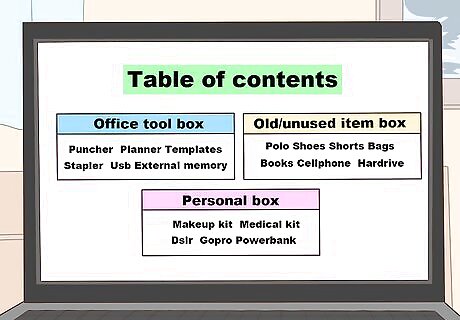
Create an outline or “Table of Contents” of your organized office. You might have everything organized, but you might not remember where every item was placed. Type up a list of each box or bin you created and what is inside of it for quick, future reference. This list will also help you put things back where they belong after you remove them.

Create “to do” and “done” spaces on your desk. Have two specific areas on your desk for things that need to be done (papers to sign, reports to read, etc…) and a pile for things you have completed. By making separate areas, you will not confuse yourself on what you have or have not done.
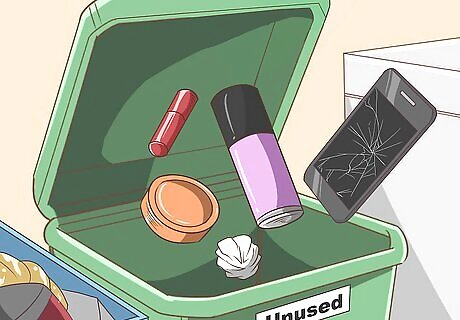
Throw away things you do not need. As you are putting your things into the boxes and bins you have acquired, throw away items you do not need. Dispose of things you have not touched or opened in a year, all broken items, and return extra supplies. You can shred old papers and ask you coworkers if they are interested in any of the things you are disposing. If you are struggling to throw something away, try donating it instead.
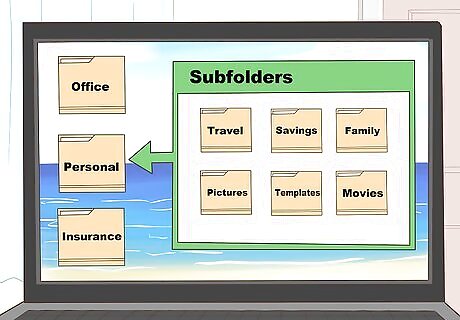
Organize your computer. You can organize tangible objects around you, but having a disorganized computer will limit productivity and make you feel disorganized still. Create new folders and subfolders to put files into, organize your desktop so you can easily find specific items, remove duplicate files, name documents with detailed titles, and delete unnecessary apps and documents.
Staying Organized
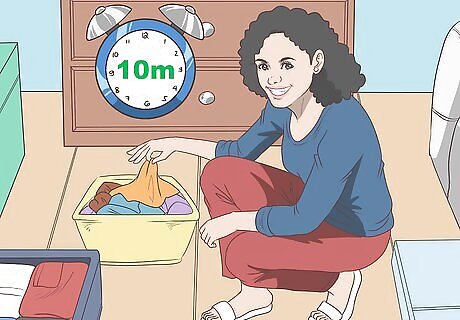
Spend ten minutes a day doing a quick pick-up. You have spent your time organizing and putting everything in its rightful place, so keep it that way. Each night, set an alarm that signals a ten-minute period where you put away out of place objects, and ensure you bins and baskets are still organized.

If you are adding a new item to your life, dispose of an old item. Before you buy a new book, go through your book shelf and remove one that you have not or will not read. Donate or throw it away so hat your new item can take its place. Go a step further and get rid of two or three items for every new item.
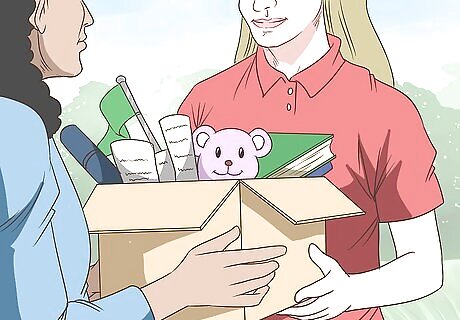
Keep a “Donate” box out at all times. Have a box where you can throw items into to donate on hand at all times. As you notice an item you don’t want any more, immediately take it to the donate box. When you have an unwanted item that cannot be donated, take it to the trash right away.
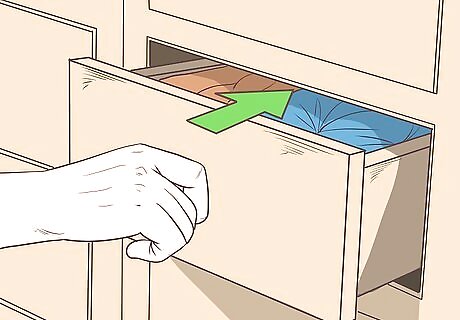
When you see an open drawer, close it. Don’t wait for your ten-minute tidy-up time to stay organized. If you see something out of place, put it back right away. If you pass by a full trash can, empty it. When you see out of place papers, put them away. Make organization a habit to make it most effective. Don’t spend too many precious minutes of your day doing small tidy jobs. Don’t go out out your way to close an open drawer. If you are getting up to go to a meeting, and the open drawer is on your way, then close it. If you interrupt your workflow to close a drawer, you will reduce your overall productivity by 25%!
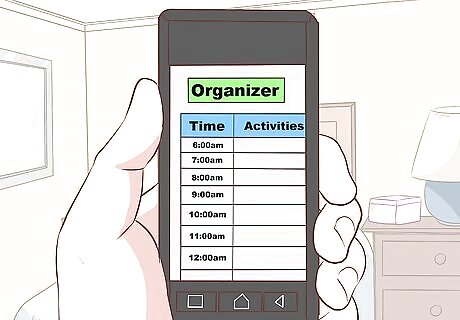
Harness technology to help you stay organized. There are literally thousands of apps you can use to keep yourself organized. There are many to do list apps, such as Evernote, reminder apps such as Beep Me, travel organizers such as TripIT, and apps to help organize the importance of your tasks, such as Last Time. Look for apps that will sync across your devices so they are accessible no matter where you are.











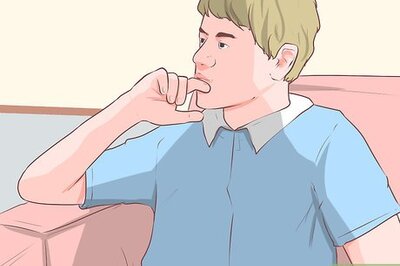
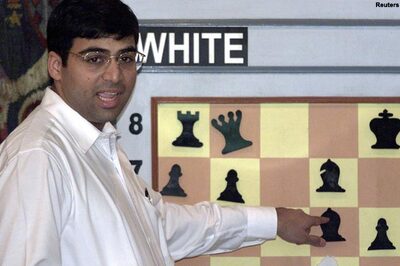




Comments
0 comment